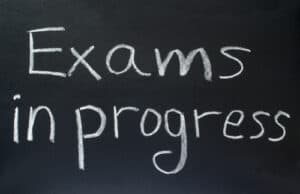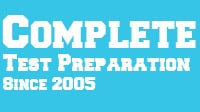What your Professor wants to see on your Exam
- Posted by Brian Stocker
- Date September 10, 2018
- Comments 1 comment

It sounds like such an easy question: “What does your instructor or teacher want to see from you on your test paper?” And the easy answer: “He wants to see the right answers.”
Tips
1. Get to know your instructors. Introduce yourself so that they know you and are aware that the course is vital to you. Make yourself visible – sit near the front of the class and attend regularly.
2. Give feedback. Everyone needs feedback on how they are doing! This helps instructors know what you like and want you want featured more during classes. Some instructors provide forums for periodic evaluations of their performance in the classroom. Make sure your fill them and let your instructors know what they can do to improve classroom performance.
3. Compliment instructors. When your lecturer or instructor gives a good demonstration or lecture, be sure to compliment them and let them know that you liked it and found it effective. Don’t overdue it though and don’t ingratiate yourself – be honest and authentic.
4. Keep the channels of communication open. Feel free to ask questions so that you are sure that you understand what the instructor requires. Participate in class discussions
5. Ask for help when you need it. Don’t be shy requesting help or clarification when you need it. The instructor would be happy to clarify or explain what you do not understand or find clear. Just be sure to ask pleasantly and respectfully that the instructor explains or restate an unclear point. Especially during classes, if you don’t understand something, then chances are that others don’t either. Most professors are very much aware of this.
6. Answer questions posed by your instructors. This encourages your instructor, shows your intelligence and stimulates your thinking. Lectures are prepared to stimulate students thinking. Refusing or ignoring to answer the questions won’t help you or the instructor.
7. Take responsibility of your education. Don’t be quick to request for extra considerations or favors from your instructors. Stop making excuses and take ownership of your learning by doing what has to be done when they have to be done. Instructors are not special humans and so have their off days and their own share of mistakes. Their job is not to entertain students and you cannot expect them to always be available to be your private instructors.
Taking a Test? We can Help!
Now What does your Professor want to see on a Test
Research the test thoroughly online and you will be surprised how much information you can come up with.
Suggestions
1) Show your instructor that you recognize and comprehend key concepts from the course. Sure, you can get that “A” by just answering the right questions. But showing your teacher that you understand what he has been teaching will make him more likely to help you in the future, and to give you the benefit of a doubt when a grade is in question. So especially on essay portions, do your best to explains in such a way that demonstrate that you have a true understanding of the course, and that you’re not just regurgitating word-for-word what the book said.
2) Show him that you have neat handwriting and an organized presentation. No, it’s not essential that your paper look good when you turn in your test. However, it does make a good impression. Perhaps more importantly, when the paper is neat, it’s easier for the instructor to grade it. And when the paper is neat and easy to read, there’s less chance of the instructor marking something wrong that should be marked right.
3) Show all work. This is especially true when it’s a math exam. Even if you can figure out the answer in your head, unless it’s a timed exam, you should show your work. There are two good reasons for this. First, as we’ve already mentioned, it’s smart to make a good impression on the teacher, and to show that you truly grasp the material. On a more practical level, though, it also proves conclusively that you’re not cheating on the test–that the test you’re turning in is really your own.
4) Show him a paper that is free of personal bias and that sticks to fact. This is, of course, unless the question specifically asks for your opinion. Too many people, on a test that should be all fact, insert lots of opinion, especially into essay portions. They do this, often, to try to take the instructors’ focus off the fact that the student doesn’t know the facts of the course. This strategy almost never works.
5) Show him good vocabulary. Most teachers are suckers for a student who uses an uncommon word in the correct way, when it’s exactly the right word for the circumstance. It shows intelligence and that you’re somebody who is genuinely learning.
6) On the other hand, show him that you’re not into overly-flowery language. Using good vocabulary is one thing. Throwing in one difficult word after another, though, in order to sound more intelligent than you are comes across as fake. And it does not make a good impression. Remember: When it comes to using uncommon vocabulary words on an exam, moderation is the key. Use a few good words, but otherwise, use words that you would use in your everyday speech.
7) Use quotes when appropriate. Here’s a trick that impresses almost every instructor, and adds something substantive to your exam essay portion. Memorize an exact quote that someone said pertaining to whatever you’ve recently studied in that class. Then look for a place to incorporate that quote in a long-answer or essay portion of the exam. For instance, if you’ve been studying about slavery, you might memorize a portion of the Emancipation Proclamation, and find some way to incorporate it into the test. This is a tactic that shows that you know more than just how to recite word-for-word the answers from the book, but that you truly understand how the persons associated with the material felt about it.
8) Similarly, use statistics when appropriate. Memorize some appropriate stats that pertain to the chapter that you’re testing on, and when you find the right opportunity, cite those stats, to really show the instructor that you know the material.
9) Proofread your work before you turn in your paper. While most of our suggestions here have pertained to making a good impression in the instructor, it’s also important that you not make a bad impression. For instance, papers that are filled with spelling or grammatical errors will not look good with most teachers. So make sure you re-read your paper before you turn it in, and correct any blatant errors in spelling or grammar that you see.
10) Follow the directions that are on the test. It’s amazing how many students know the material that’s on the test, but they irritate the instructor by not following the directions given on the test paper. For instance, maybe the directions say to circle the correct answer, and the careless student underlines it. Or the directions state that it’s a “True or False” section and the student answers “Yes or No.” Not good–and not something that will have your instructor feeling good about you as a careful student.
11) Finally, remember when you take a test that timing is important. Some students rush through the exam, because they have to be the first person to finish. They think that it’s a competition, and that the first person who finishes wins. However, this often communicates to the instructor that you were in a hurry and that you were likely careless in taking the test. On the other hand, waiting until you’re the very last person to finish the test sends a subtle message that you were unsure of yourself. Try to be somewhere in the middle when you hand in your completed exam. If you get done too much before everyone else, use that extra time to thoroughly proofread the test and check your answers.
These 11 suggestions will set you apart above others in your class. They will turn your test into a tool that links you with your instructor, and puts him in your corner.
Date Published: Monday, September 10th, 2018
Date Modified: Monday, January 9th, 2023
Got a Question? Email me anytime - Brian@test-preparation.ca
You may also like

Five-Day study plan – Ready for Blast Off Day!
How to Take a Test — the Basics How to Take a Test – 2 Common Mistakes on a Test – and how to avoid them! Written by, Brian Stocker MA., Complete Test Preparation Inc. Date Published: Monday, March 4th, …


1 Comment
YUP! he is the one that u got to please